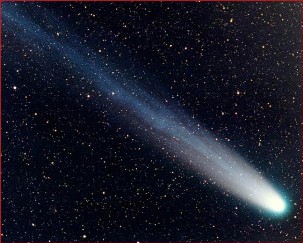
Tiny diamonds that have been unearthed across North America may lend clues to a major cooling event that occurred 13,000 years ago. The cooling event, known as the Younger Dryas, coincides with the extinction of the wooly mammoths and with demise of the Clovis people, who are widely considered to be the first human inhabitants of North America.
According to the report in this Friday’s issue of Science, scientists identified thin layers of tiny diamonds scattered across sites in North America. All the diamonds date back to the same period, roughly 13,000 years ago.
But the carbon atoms in the newly-discovered diamonds contain a hexagonal crystal pattern -- not the usual cubic structures. This fact led researcher James Kennett, a geologist at the Universityof of California, Santa Barbara and one of the authors on the paper, to conclude that the diamonds were not formed by normal processes (like a volcanic eruption or a forest fire) here on earth.
“They indicate there was an extraterrestrial event on Earth 12,900 years ago,” Kennett told BBC News.
The scientists hypothesize that a meteor may have hit North America. A severe impact would have been devastating for the Earth’s climate and could have caused the major cooling period, which in turn would have led to the extinction of the wooly mammoths and the Clovis people.
However, critics of the so-called “impact theory” claim that the tiny diamonds are not sufficient proof of a major impact. They point to the lack of any other evidence – such as an impact crater, or remnants of melted rocks – and say that more research is needed before any definitive conclusions can be drawn.